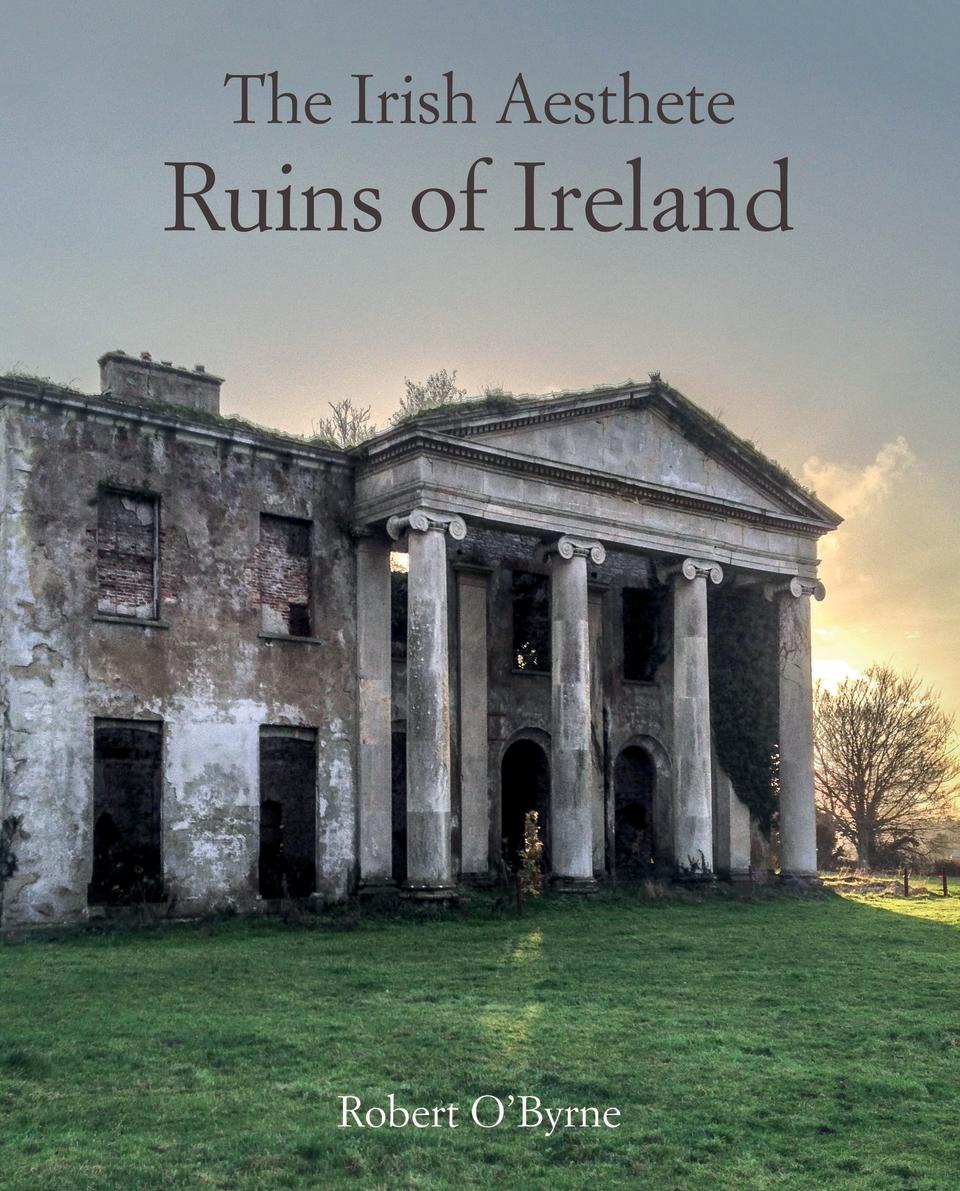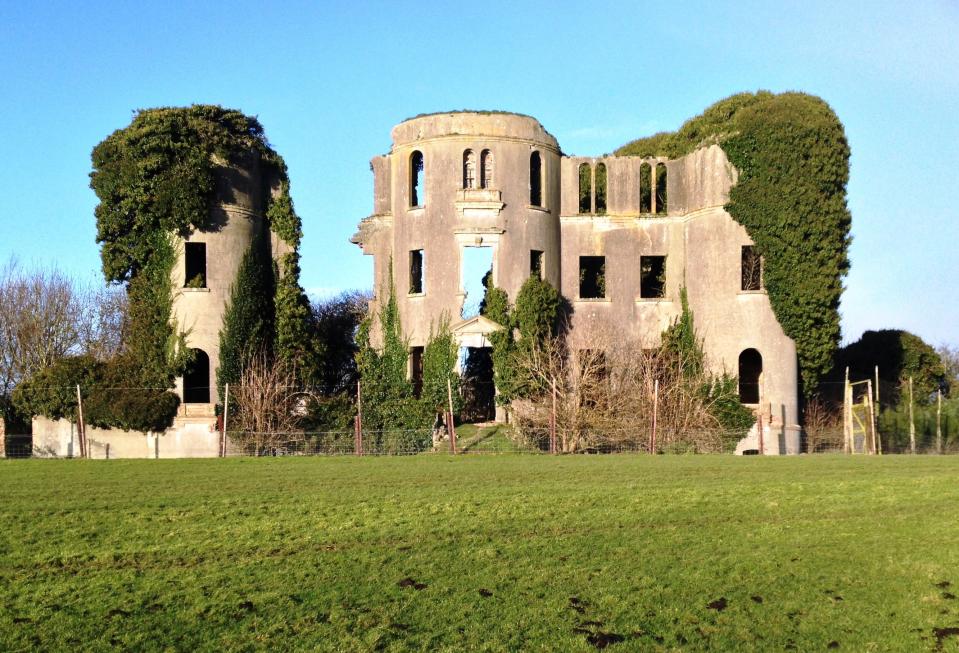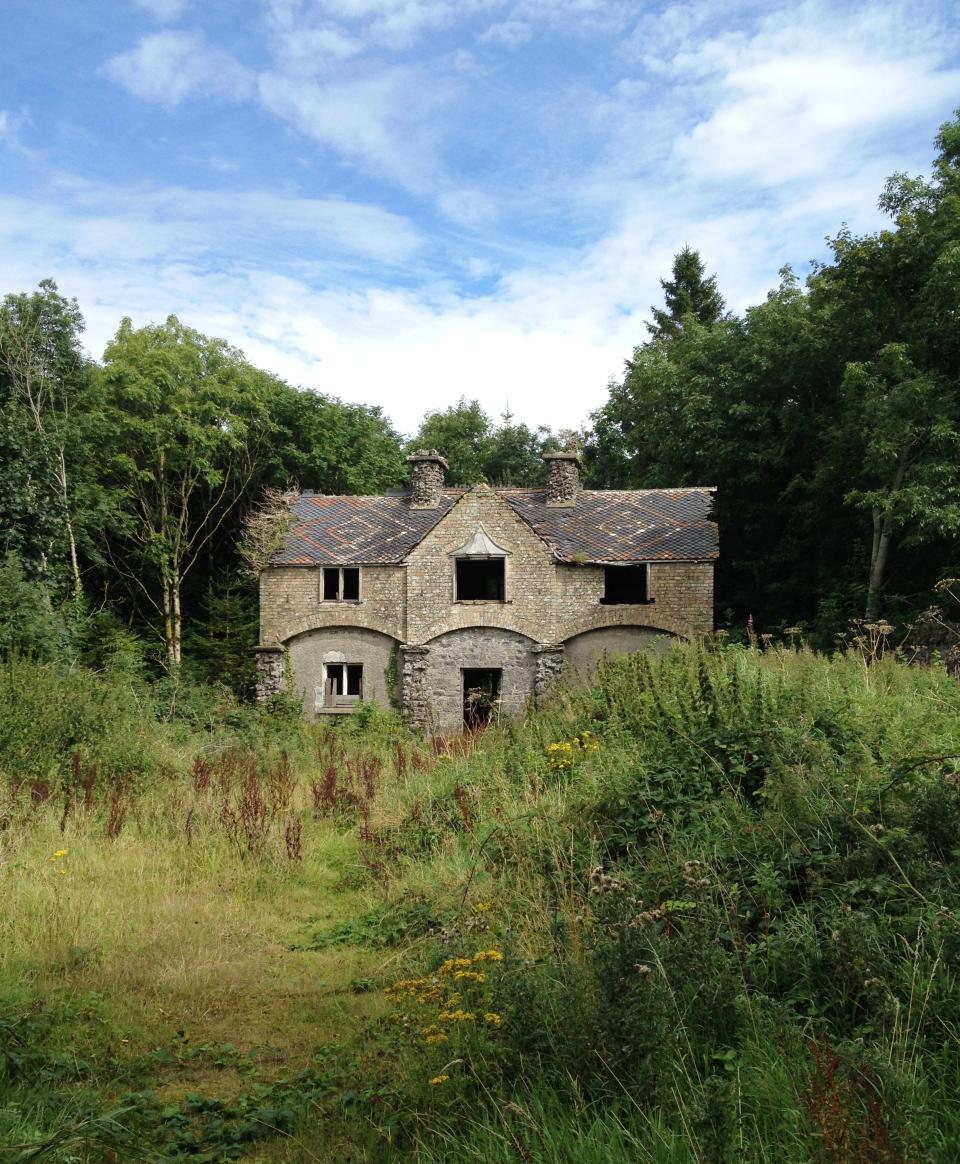Decorative Arts Expert Robert O’Byrne Documents Ireland’s Ruins in New Book
“I rather dislike the notion of going to visit a site and taking photographs,” Irish writer and lecturer Robert O’Byrne recently told me in a telephone conversation from his home in County Meath. “You’re so busy recording the moment that you’re not experiencing it.”

IW CB1276_RUINS_IRELAND_JCKT_17MM_SPINE.indd
Lucky for us, the lanky, puckish decorative arts expert long ago overcame that squeamishness. For one, there’s The Irish Aesthete, the romantic and highly informative blog about historic Hibernian architecture that he has been producing since 2012—and of which fully 50 percent of its 26,000 followers are located in the United States, among them AD100 designers Michael S. Smith and Roman and Williams. For another, there’s The Irish Aesthete: Ruins of Ireland (CICO Books, $24.95), a new book of modest size and moody cover that features O’Byrne’s haunting photographs of 64 tumbledown structures, all of them snapped with his smartphone. “I’m taken aback that it works so well. One just stands and points,” he says. “More and more it seems to me that the secret to taking a good photograph, though professionals would argue otherwise, is to have a steady hand: No drinking the night before.”

Among the cavalcade of domestic disintegration are gate lodges, manor houses, castles, stables, tower houses, glebe houses, villas, and the like, each one heartbreakingly picturesque. “They embody the concept of memento mori and the transience of time and mortality. It’s the Ozymandias principle: Look on me and weep,” O’Byrne explains, who also wrote succinct, erudite, and colorful essays about each lamented spot. (A former vice president of the Irish Georgian Society, he also writes a regular column for the eminent arts magazine Apollo and the equally august Irish Arts Review.) “The thing about visiting ruins is that it’s a variant on the pleasure-pain principle,” he continues. “On the one hand, one feels like a masochist, being thrilled at the sight of a great ruin. One should feel appalled, but I’m thrilled that I’m appalled, perversely. People went to the trouble of creating these beautiful buildings, and now the outer walls are all that’s left.”
Given the location, there are indeed a lot of crumbling walls to explore. “Ruindom is an ongoing tradition in Ireland,” O’Byrne says. “In the 1920s, during the War of Independence, quite a number of significant houses were intentionally burnt. Many more houses were unroofed in the 1930s, 40s, and 50s. Landowners had to pay taxes on a dwelling with a roof, and one way to avoid taxes was to take the roof off.” From the neoclassical granite entrance lodge at Castleboro in County Wexford (a house that was destroyed by an IRA-related arson involving paraffin-soaked hay bales in 1923) to the 14th-century Shane’s Castle in County Antrim (another torching veteran that is often seen on Game of Thrones), O’Byrne makes his intrepid way across the Irish countryside in search of dilapidations both modest and noble. Many of them bear delicious names: Who wouldn’t want to live in a house called Mount Panther? He keeps a pair of “good stout boots” in his car, he tells me, just in case he comes across “a very sad ruin in the middle of a field, and to get there one has to negotiate around sheep and heifers,” experiences that he describes as “close encounters of the slightly terrifying kind.”

O’Byrne’s four chapters cover Leinster, Munster, Connacht, and Ulster, the provinces that make up Ireland and Northern Ireland, and, inevitably, he points out, some areas get more attention than others. “Leinster has much of the best land, and so it could support more country houses and more ruins,” he explains. “In Connacht, the estates are larger but the quality of land not so good. Ulster’s land is quite good, but it has also preserved more of its country houses so there are fewer ruins. Munster has vast amounts, especially in County Cork.”
The island’s losses have been O’Byrne’s gain (at the end of our chat, he was preparing to dash off to County Antrim to see what is left of architect John Nash’s circa-1803 Kilwaughter Castle) and a continuing fascination for his fans. “A ruin that has been fully restored and decorated leaves no place for our imagination,” he explains. “But a ruin that is entirely unimproved is something onto which we can project our own ideas—what it was like, what we would do with it.”
More from AD PRO: Has Instagram Made Design Shows Better?
Sign up for the AD PRO newsletter for all the design news you need to know

